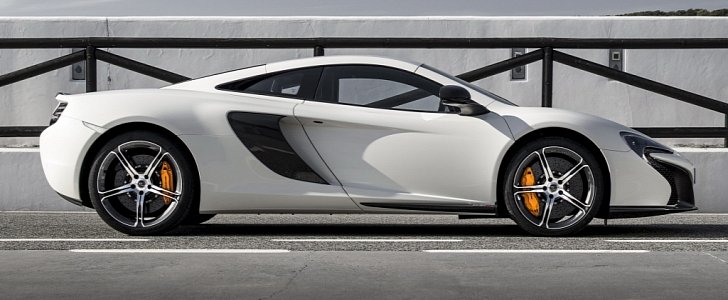McLaren Automotive, the British automaker that was born from the efforts of the second oldest active Formula 1 team, is going to replace the 650S in 2017. A hell-bent for leather supercar will succeed the current weapon of choice in the Super Series lineup.
In the six-year business plan christened Track22, McLaren makes it clear that it plans to launch 15 cars by 2022. One of the first will be the McLaren 688HS, a limited edition of the 650S that packs more punch and more visual drama than the already bonkers 675LT. In addition to the McLaren 688HS, the British automaker is developing a fully-electric hypercar that will slot in the Ultimate Series range of models.
As per a report from Autocar, the replacement of the 650S is due to arrive 2017, most probably at the Geneva Motor Show. Internally referred to as the P14, the yet-unnamed model will pack serious firepower from the tried-and-tested 3.8-liter twin-turbo V8 developed and manufactured by McLaren.
Speaking to the British publication, chief executive officer Mike Flewitt mumbled something about making the P14 as “investment-efficient and engineering-efficient” as possible. Don’t boo and hiss, though, because the new kid on the block will be much more than the sum of its parts. Frank Stephenson, the McLaren head of design, assures us that the all-new supercar is “unpredictable. It will raise eyebrows. It’s got a lot of things that just haven’t been done in car design before.”
Some of the things to look forward to from the yet-to-be-christened McLaren P14 are “ultra-powerful LED lights,” front-end graphic unlike anything we’ve been accustomed to, and a thoroughly different cabin.
In related news, McLaren will bring a turbocharged six-cylinder engine to market in the near future.
Flewitt wouldn’t put his money where his mouth is, yet he told Auto Express the following: “Eventually cylinder count will come down, but that’s beyond the end of this development cycle. Our powertrain engineers’ vision is that we go from a big, powerful engine to, eventually, an EV, and on the journey there you’ve got a period of hybridization, minimal at first but eventually turning the combustion engine into a minority partner.”
A twin-turbo V6 isn't a bad proposition when you think that the 2017 Ford GT uses the same architecture.
As per a report from Autocar, the replacement of the 650S is due to arrive 2017, most probably at the Geneva Motor Show. Internally referred to as the P14, the yet-unnamed model will pack serious firepower from the tried-and-tested 3.8-liter twin-turbo V8 developed and manufactured by McLaren.
Speaking to the British publication, chief executive officer Mike Flewitt mumbled something about making the P14 as “investment-efficient and engineering-efficient” as possible. Don’t boo and hiss, though, because the new kid on the block will be much more than the sum of its parts. Frank Stephenson, the McLaren head of design, assures us that the all-new supercar is “unpredictable. It will raise eyebrows. It’s got a lot of things that just haven’t been done in car design before.”
Some of the things to look forward to from the yet-to-be-christened McLaren P14 are “ultra-powerful LED lights,” front-end graphic unlike anything we’ve been accustomed to, and a thoroughly different cabin.
In related news, McLaren will bring a turbocharged six-cylinder engine to market in the near future.
Flewitt wouldn’t put his money where his mouth is, yet he told Auto Express the following: “Eventually cylinder count will come down, but that’s beyond the end of this development cycle. Our powertrain engineers’ vision is that we go from a big, powerful engine to, eventually, an EV, and on the journey there you’ve got a period of hybridization, minimal at first but eventually turning the combustion engine into a minority partner.”
A twin-turbo V6 isn't a bad proposition when you think that the 2017 Ford GT uses the same architecture.











